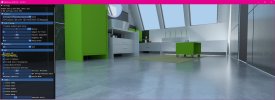Oh it tries to capture the entire scene in one model? I didn't expect that.NRC trains from low-res, full-length traced scene. The result(=cache) is a tiny neural network model.
Next gen lighting technologies - voxelised, traced, and everything else *spawn*
- Thread starter Scott_Arm
- Start date





